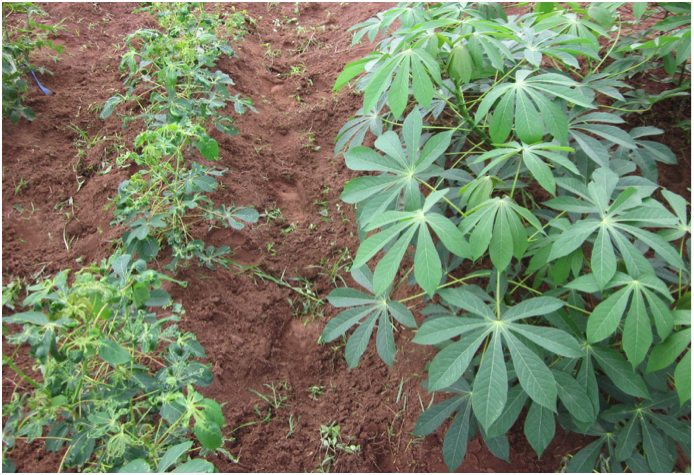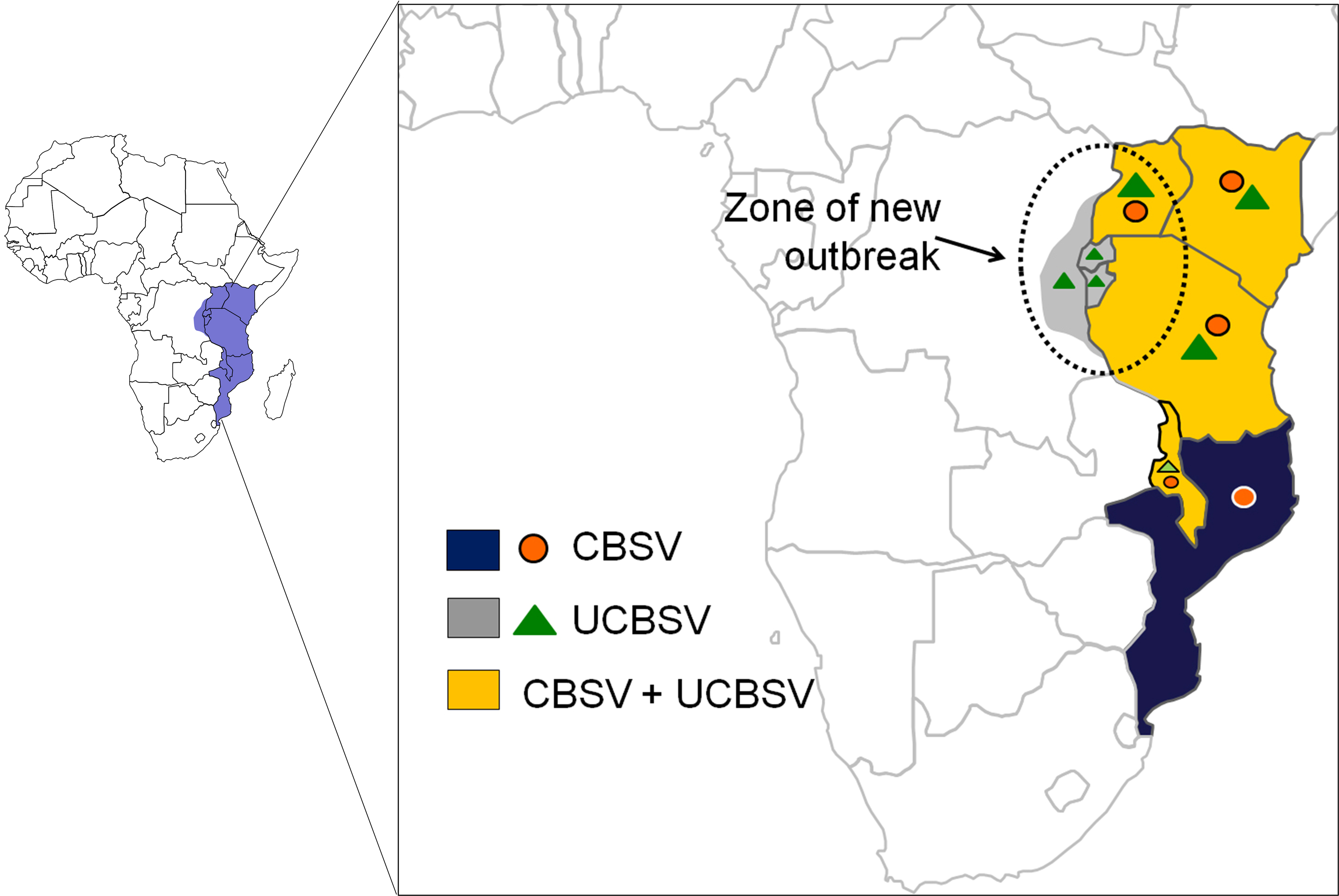Disease resistant cassava varieties
Summary
Production of cassava by farmers in Sub-Saharan Africa is widely limited by pernicious viruses such as cassava mosaic disease, cassava brown streak disease and several more that cause damage to leaves and thereby reduce photosynthesis, which leads to yield losses and possibly complete crop failure. The most common measures to protect this food crop against infection by pathogens include the removal of symptomatic plants and use of virus-free planting materials but these options are labor intensive, not completely effective and require continuous and long-term interventions. Cassava varieties have been developed and released in African countries that are resistant to major diseases and bring down infection rates and yield losses in stands, as well as prevent rapid spread across growing areas. Use of cultivars that possess genetic defense mechanisms is a viable and efficient avenue to combat viral infections of cassava crops, particularly because farmers tend to favor vigorous and/or symptomless plants when selecting cuttings for new plantings.
About the Solution
It is estimated that farmers in African countries are losing 20% to 95% of cassava yields as a cause of disease infections, and continent-wide this is amounting to 12–23 million ton of fresh roots per year, worth about US$1,200 – 2,300 million. Dispersal of cassava mosaic and brown streak viruses in Africa primarily takes place by whiteflies that feed on leaves, and also by reuse of infected cuttings as planting material in farms. Years of work by African breeding programs has identified several cassava land races that possess natural resistance to common viral diseases, which is ascribed to multiple recessive genes. Transfer of the immune trait from wild types into improved cassava varieties through conventional crossing techniques has been successfully used for developing cultivars that withstand diseases and is relatively low in cost. Genetic markers for resistance to different viruses in African cassava varieties have recently been found which accelerate breeding efforts to obtain immunity against diseases for elite high-yielding type that are well-adapted for specific growing areas. Techniques through which gene expression in cassava plants is modified, i.e., RNA silencing, have been successfully employed to develop varieties that are resistant to common viruses, and offers advantages over conventional breeding methods that are confounded by the crop’ inbreeding depression and heterozygosity.
Cultivating varieties of cassava that withstand mosaic disease is of critical importance in all major growing areas from Sub-Saharan Africa because the virus has spread widely across the continent, and thus sweeping countermeasures are required to safeguard this staple crop. Brown streak disease resistant lines of cassava are necessary for farmers in regions of East-Africa and the eastern part of the Congo Basin where this virus causes extensive damage to root yield. Producers operating in areas that are plagued by high numbers of whiteflies that transmit the diseases among crop stands especially require the use of resistant varieties by farmers. Cultivating resistant lines is offering pertinent benefits when the damage of viral infections in cassava production is high or low for the reason that the interventions increases root yields and decreases further dispersal under different pressure. One of the main advantages s since there is no complete systemic infection of plants which makes that a substantial proportion of cuttings collected are entirely virus-free.
More than 200 improved cassava varieties that are resistant to mosaic disease have been released over the past two decades, and are multiplied by programs in 31 African countries for distribution to farmers. In the last five years, breeders have developed xx cassava varieties that withstand attacks by brown streak disease and were made available to national systems for deployment in heavily impacted regions. There are also a number of elite lines with dual resistance to cassava mosaic and brown streak diseases that offer farmers a powerful means to combat viral infections. Breeding for disease resistance has been selected varieties that are high-yielding and carry good consumer preference and other end-use traits. Many of the varieties that are resistant to cassava mosaic disease or brown streak disease also withstand other major cassava pathogens like bacterial blight disease, anthracnose disease, cassava green mite, and cassava mealybug, offering a major advantage for integrated crop health management by farmers. Various programs are making continual efforts to identify and engineer cassava varieties that withstand common diseases and fulfil agronomic needs.
Disease resistant varieties are multiplied and cultivated in the same way like any other cassava crop, in which cuttings taken from one stand are reused to plant another field. Caution has to be exercised by farmers that planting materials are free of diseases symptom when transfers are made between fields in order to effectively drive back infections and associated yield losses. Planting disease resistant varieties on boundaries of farmer fields or the rows oriented to the prevailing wind direction has shown to limit infections of susceptible varieties in the middle. Different modes for planting have to be employed depending on rainfall conditions, cuttings are best placed horizontally and covered entirely with soil in areas with a dry climate, and can be planted vertical or angular in humid areas with high precipitation. Recommended soil and fertilizer management for particular growing areas and conditions have to be adhered to achieve high root yields. Limitations in the availability of nutrients and water, soil compaction and weed encroachment have to be addressed for making sure that the use of disease resistant cassava varieties increases production levels.
Commercialization
Commercially available
Solution Images
Institutions

Accompanying Solutions
Integrated weed, pest and soil management system (GAP), Seed bulking for cassava multiplication



